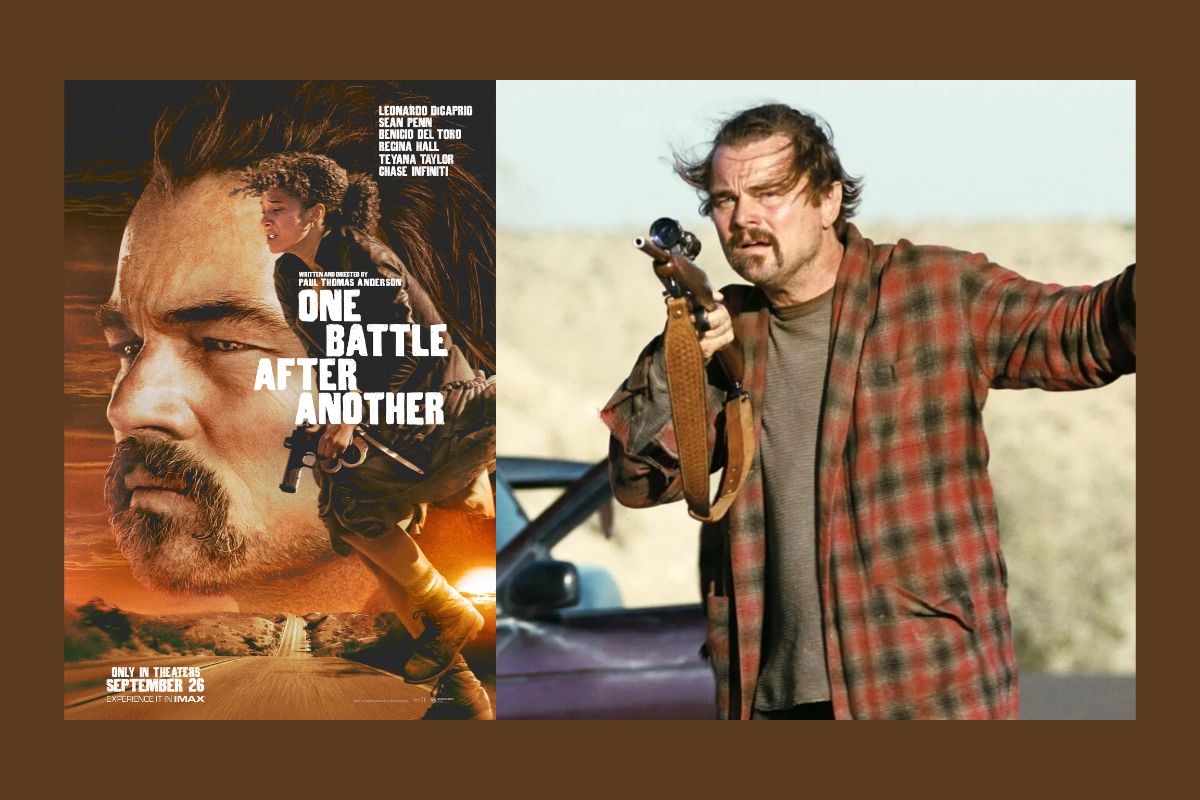
Published: : September 28, 2025, 02:11 PM

Paul Thomas Anderson’s crazy amalgam of the film languages of the Coen brothers, Quentin Tarantino and himself sees the director reinventing himself. Despite some annoying moments, One Battle After Another is astonishingly contemporary and fun.
‘It is not an abyss that separates us from yesterday, but the changed situation’
– Alexander Kluge, Yesterday Girl (https://en.wikipedia.org/wiki/Yesterday_Girl)
At first, there is simply irritation. Anyone who, like me, fell in love with Paul Thomas Anderson’s last two films because they represented the cinematic formula for great happiness is likely to be completely baffled, if not a little shocked, by the first 15 or even 30 minutes of One Battle After Another, wondering what the whole thing is actually about. One Battle After Another is, like Inherent Vice (2014), based on a Thomas Pynchon novel. However, unlike Inherent Vice, Anderson does not translate the novel into cinematic language; rather, he draws inspiration from a few plot and idea strands from Pynchon’s Vineland. And all that remains of the narrative lightness and associative depth of Licorice Pizza (2021), Anderson’s latest film, are Alana Haim and Sean Penn. Unfortunately, Heim soon becomes a narrative nonentity and Penn mutates into something resembling one of the grotesque heroes from Tarantino’s bizarre cinematic fantasies of violence.
However, those who can come to terms with this and rejoice in the fact that a director has finally found the courage to reinvent himself instead of following his own ‚beaten tracks‘ will be rewarded.
As in his films There Will Be Blood (2007) and The Master (2012), Anderson irritates in One Battle After Another with an almost visionary, prophetic political and social presence. He extracts the core story of a militant collective called the People’s Republic of Rock and Roll from Pynchon’s Vineland, renaming it French 75, as well as the twisted four-way relationship from the novel. However, while for Pynchon the setting is the 1980s after Reagan’s re-election, for Anderson it is the absolute present. Although One Battle After Another was filmed before Trump’s re-election (which, of course, is another frightening parallel to Reagan’s re-election), the film radiates an almost impossible sense of immediacy, especially in the first part with its militant terrorist liberation of migrants from an ICE unit. Just think of the recent second attack on an ICE facility.
The second part takes place 16 years later, with completely different relationship dynamics. Not much seems to have happened except that the baby from the love triangle in the first part has grown up to be Willa Ferguson-Beverly Hills (Chase Infiniti). Unlike anyone else in this film, she does not know which gods have abandoned her. Her supposed father, ‚Ghetto Pat‘ (Leonardo DiCaprio), has settled into a life as a washed-up version of the character ‚The Dude‘ from the Coen brothers‘ iconic film The Big Lebowski, with no prospects or goals, only the paranoid concern that his daughter might be in danger forever. A concern kept alive by the third madman in the team, former ICE Col. Steven J. Lockjaw (Sean Penn). And then, of course, there are the lunatics of the Christian Adventurer Club, a white supremacist militia that could well have been recruited from today’s Tea Party movement or Charlie Kirk’s Turning Point USA association.
Anderson throws these ingredients into his nearly three-hour film rather erratically, amalgamating them into an absurd, grotesque action film. Although it lacks depth of character due to its annoying focus on the two main lunatics, Ghetto Patt and Lockjaw, it makes up for this with action sequences that are almost as crazy as they are stunning. The final chase scene, set on a winding road through the vast prairie, is one of the greatest in recent years. This is due not only to its twists and turns and surprising ending, but also to the visual impact created by Michael Bauman’s amazing camera work. Here, as in many other parts of the film, Radiohead’s Johnny Greenwood’s fantastic score comes into its own. And not only that, but in this brilliant finale, the real acting discovery of Anderson’s film, Chase Infiniti as Willa, is once again and finally given the recognition she deserves.
And with the otherwise brilliant cast – the scenes with Benicio del Toro as a migrant smuggler alone would be worth many more lines – the film ultimately leaves the viewer with a sense of cinematic happiness. Admittedly, not to the same extent as Anderson’s last two films, but that doesn’t matter, because this time it is more of a selective than a general, all-encompassing happiness, and it is certainly appropriate to the subject matter. For when, if not now, should we ask ourselves whether armed resistance was ever a good option and could be one again today? Just as Alexander Kluge did in Yesterday Girl with the similarly isolated and driven Anita, played by Alexandra Kluge, Anderson’s Perfidia and Willas mother, obsessively and with a lot of overacting portrayed by Teyana Taylor, shows that yesterday is always today.